What Is Google Trends?
Google Trends is a free tool from Google that allows anyone to analyze the popularity of search queries that are entered into Google Search across regions and languages.
And it uses a chart (which you can set to different geographical areas) to visualize the rises or falls in popularity over time.
Like this:
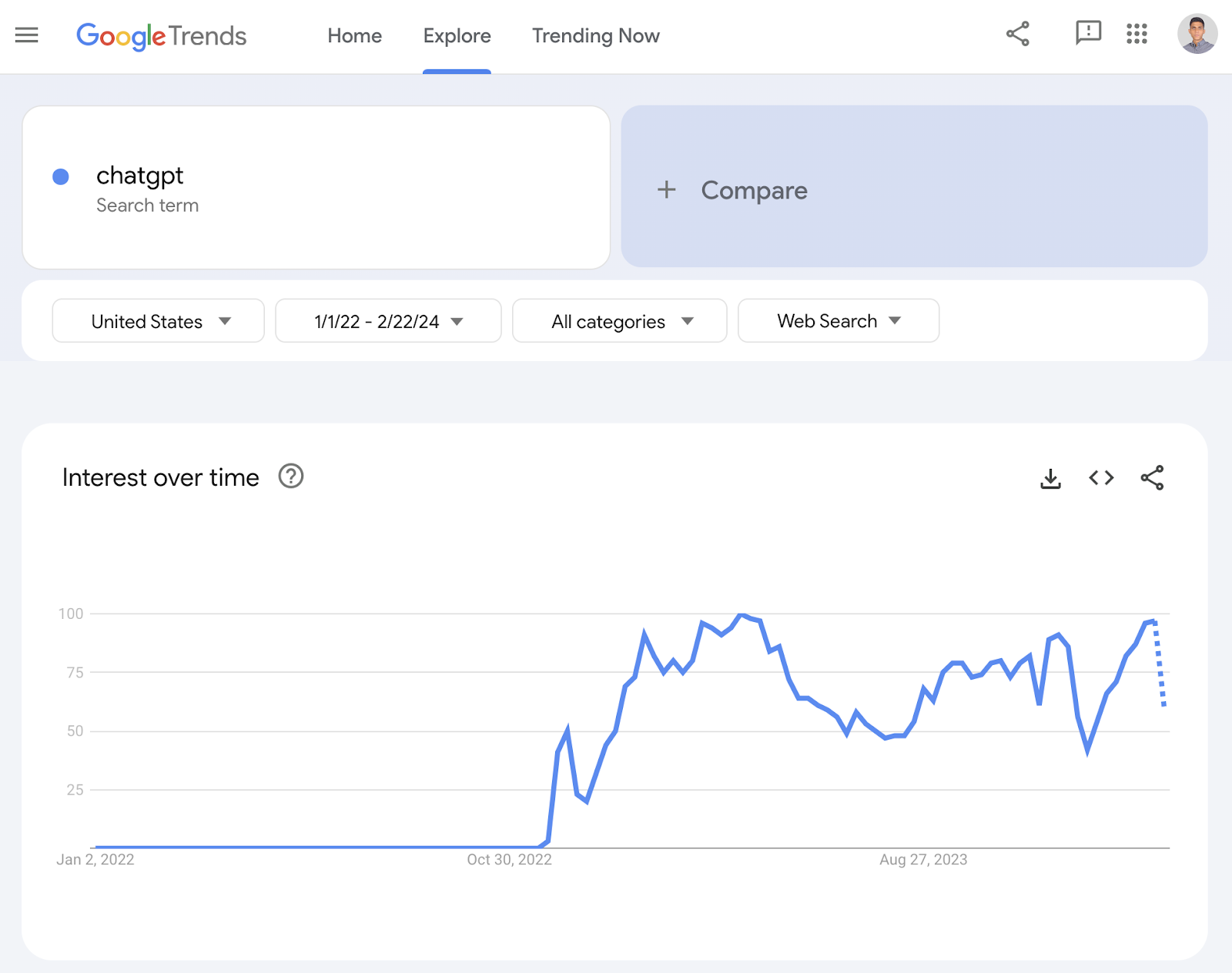
Understanding and using Google search Trends data can be very beneficial for your SEO and overall marketing. In this article, we’ll show you how.
Let’s begin.
How to Use Google Trends for a Basic Analysis
First, go to the Google Trends website. And enter a keyword you want to analyze into the search bar. For example, “ps5.”
Then, click “Explore.”

This will bring up a lot of information on the screen.
First, you’ll see the overview graph showing the keyword’s popularity over time.
Knowing how to interpret this graph is key to understanding how Google Trends works.
So, let’s go over the details starting with the interest score—which is on a scale of 0 to 100
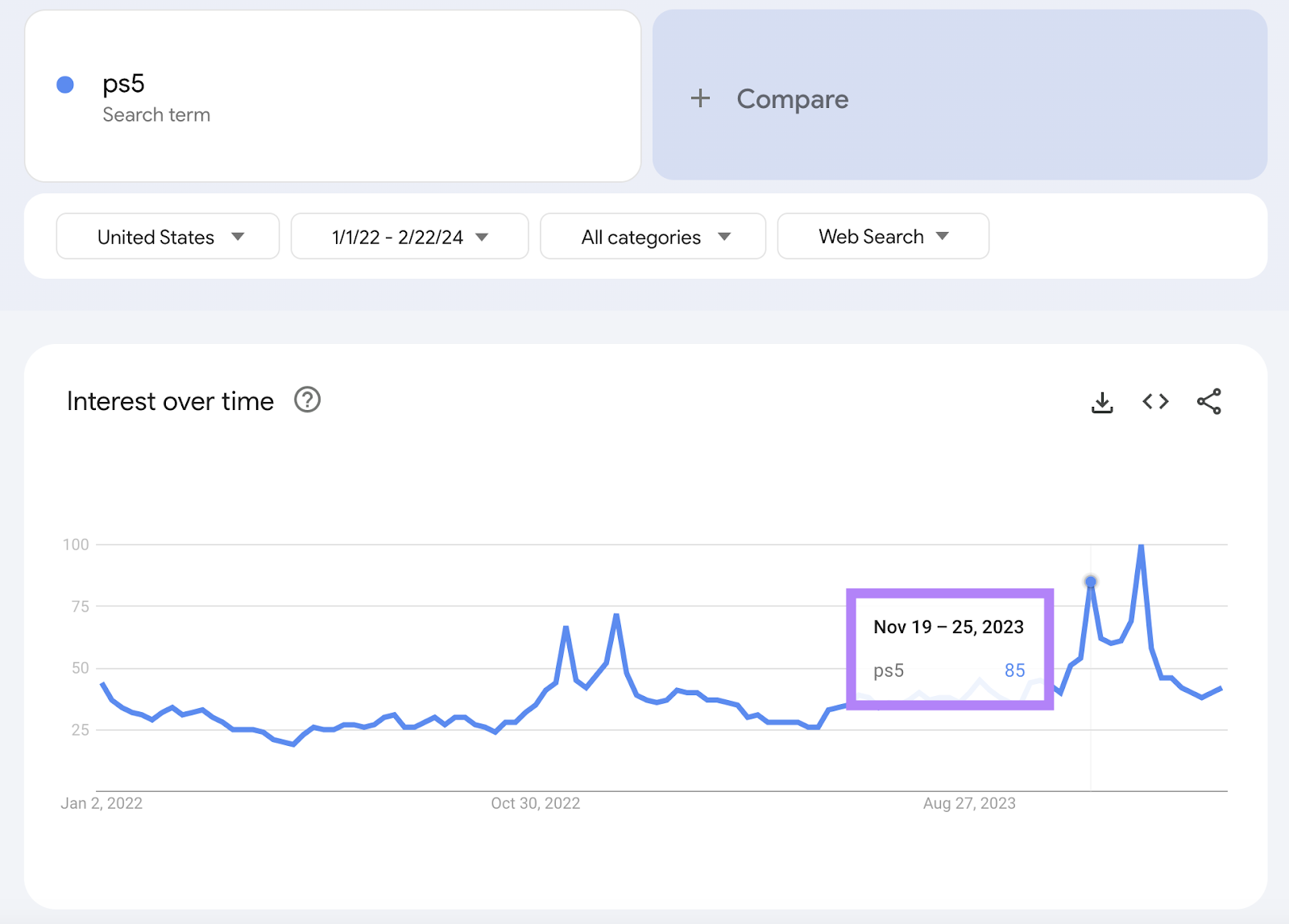
A score of 100 indicates that the keyword is at its highest level of popularity. Conversely, a score of 0 indicates that the keyword is experiencing the least amount of interest it ever has.
Look at the peaks and valleys in the graph to find seasonality patterns.
For example, interest in the keyword “ps5” spiked during the holiday season when people are more likely to purchase gifts.
An important part of analyzing trends is applying filters for country, time range, category, etc. at the top. To get more specific data.

There’s also other useful data you can see as you scroll down:
- Interest by subregion—This section shows interest for a term broken down by subregions within a country. It helps identify which states, cities, provinces, or other geographic groupings show the most interest in your keyword.
- Related topics—This section provides insights into topics that users who entered your keyword also searched for. These could be broader or more niche.
- Related queries—This section lists search queries that users who entered your keyword also looked up via search. These are the specific phrases or questions people are typing into Google.
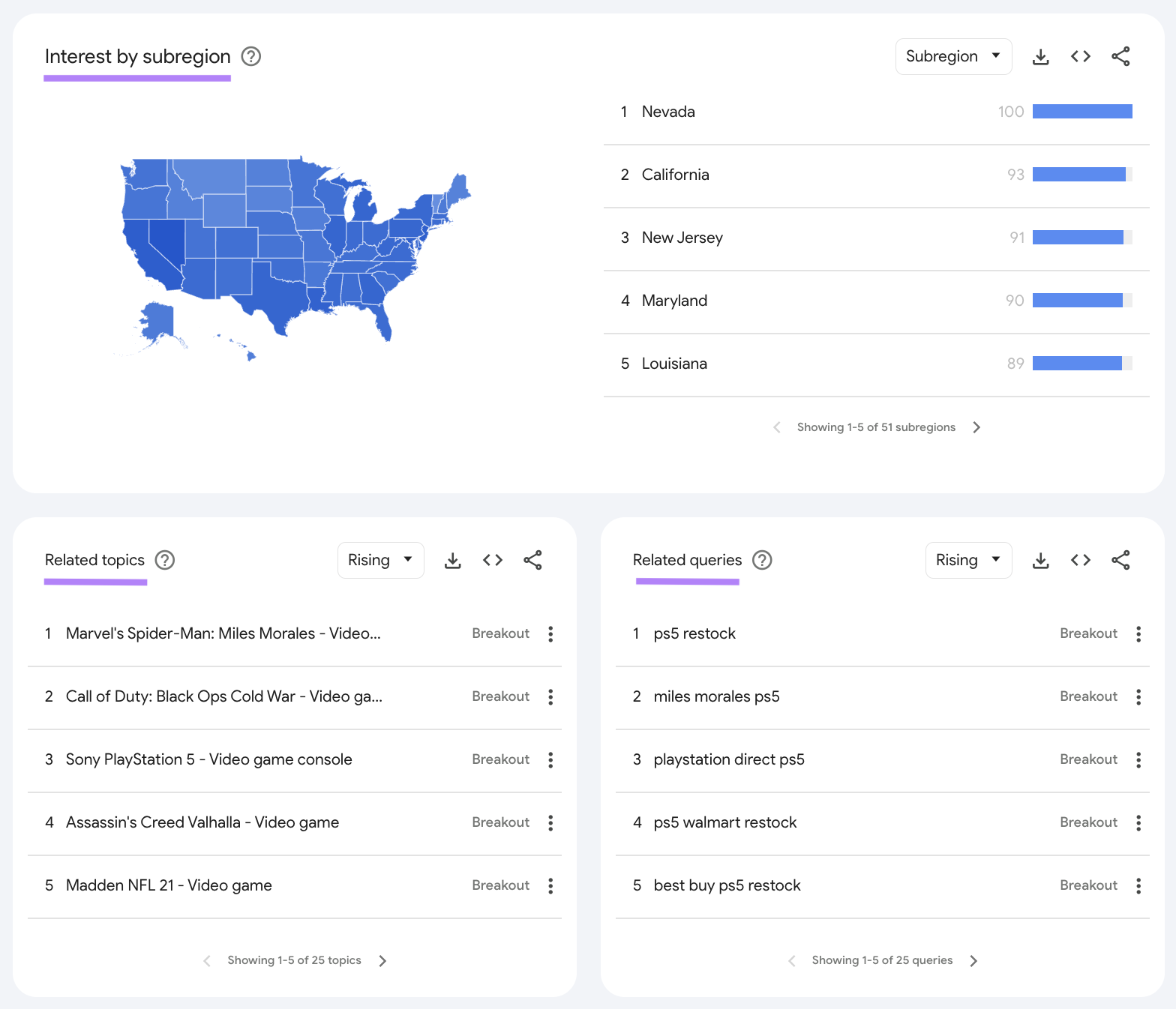
Another useful feature of Google Trends is the ability to compare multiple terms. Which you can do by clicking on the “Compare” option at the top and adding additional keywords.
For example, we’ll add “xbox series s.” And the tool will compare the interest for both of these keywords.

In this example, we can see that “ps5” is clearly leading in terms of popularity.
7 Ways to Use Google Trends to Improve Your Marketing
Now, let’s go over seven ways you can read into Google Trends to improve your marketing efforts.
1. Perform Keyword Research
Keyword research is the process of identifying valuable search queries that are relevant to your business.
The idea is to target these keywords with pages on your site. So they rank higher (i.e., appear more prominently in search results) and bring in qualified traffic.
Ready to find out how to use Google Trends for keyword research?
Let’s say you sell purses. So, search for “purses” in Google Trends.
Then, check the “Related queries” section to determine which popular keywords you might want to target.
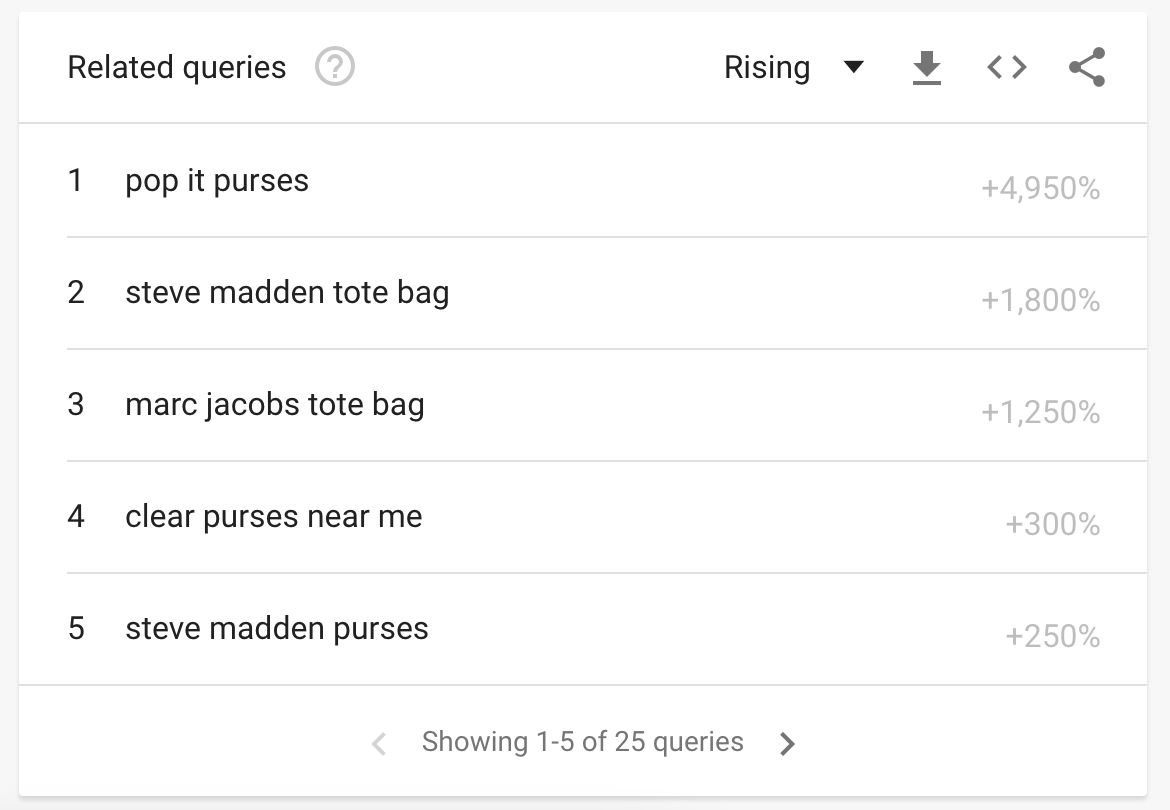
In the example above, you’ll find that many keywords are brand-specific. That’s because when people search for purses online, they often search for a specific company’s product.
If you sell other brands’ products, you can definitely target these keywords with your product category pages.
You can also compare multiple queries to see which ones are more popular:
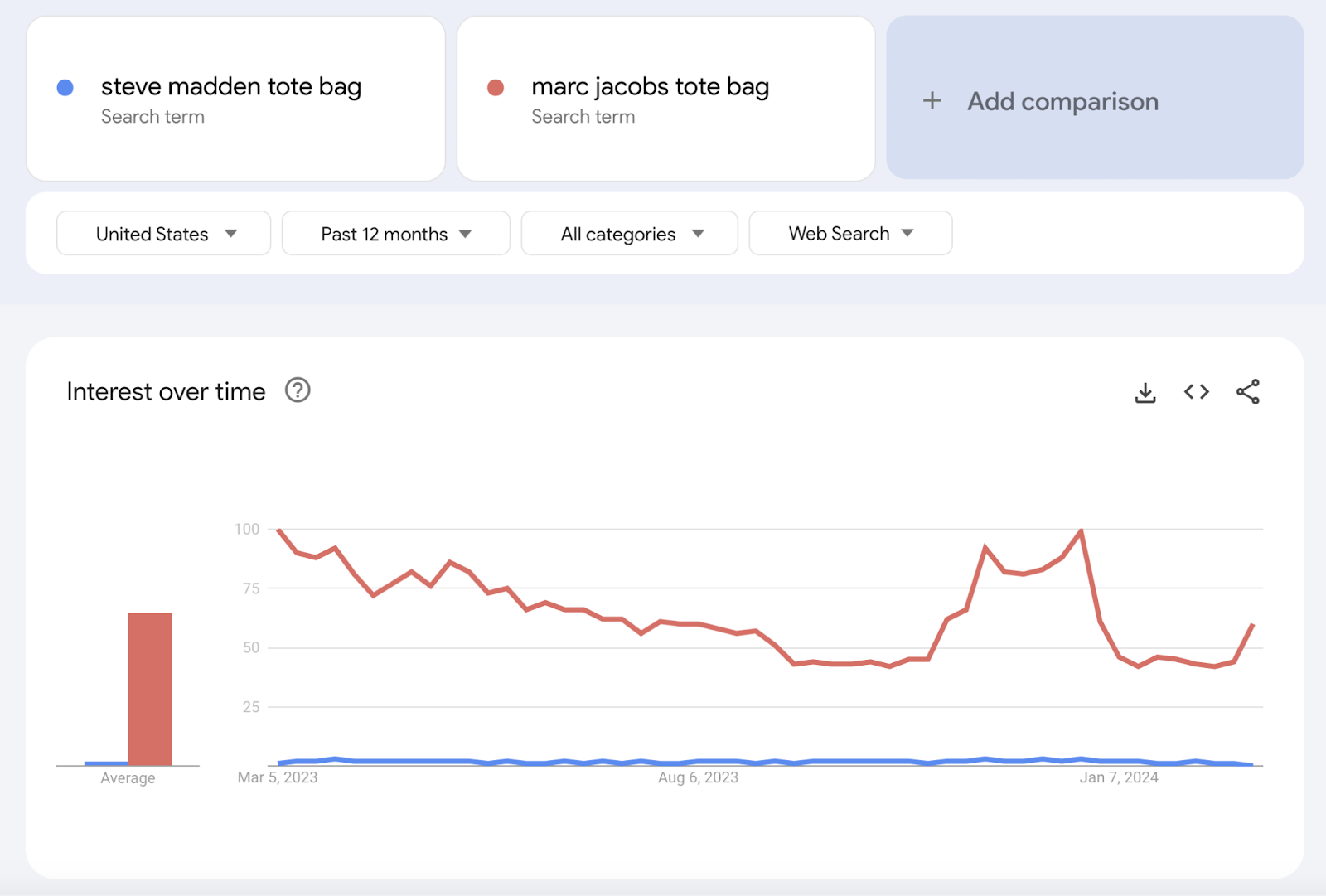
The only downside of using Google Trends for keyword research is that it doesn’t tell the terms’ search volume And it doesn’t offer a way to gauge keyword difficulty.
Both of these metrics are important from an SEO standpoint.
Search volume gives you a rough idea of how much traffic you could get if you rank well for a particular keyword. And keyword difficulty tells you how difficult it is to be to rank highly for a given keyword.
But you can get both these metrics in Semrush’s Keyword Overview tool.
Just enter the keyword(s) you want to analyze in the tool and click “Search.”
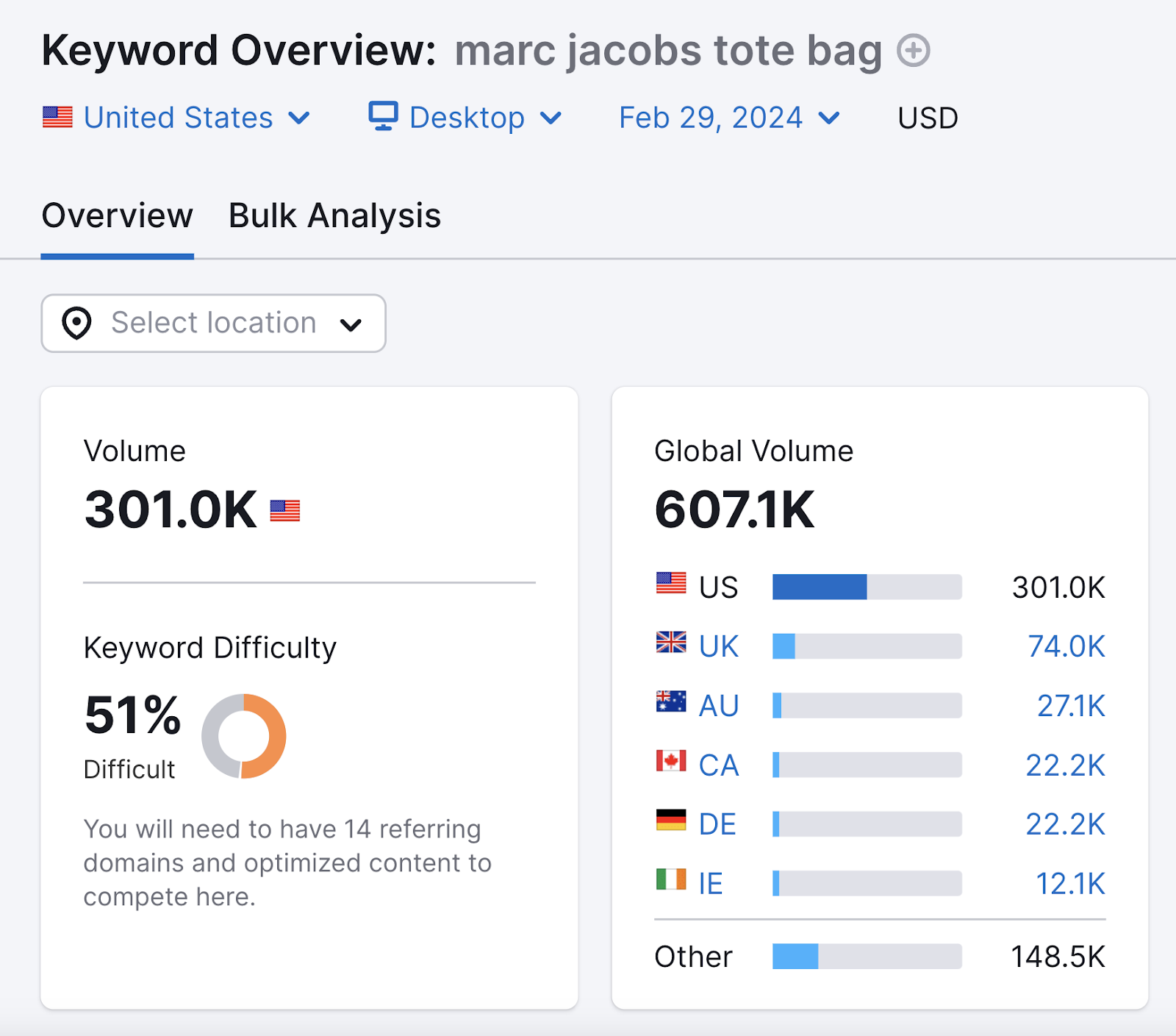
2. Build Topic Clusters
Now, let’s unpack how to use Google Trends for SEO in a more holistic way. Which involves creating topic clusters.
Topic clusters organize your site content around main themes, with related subtopics branching off each central pillar.
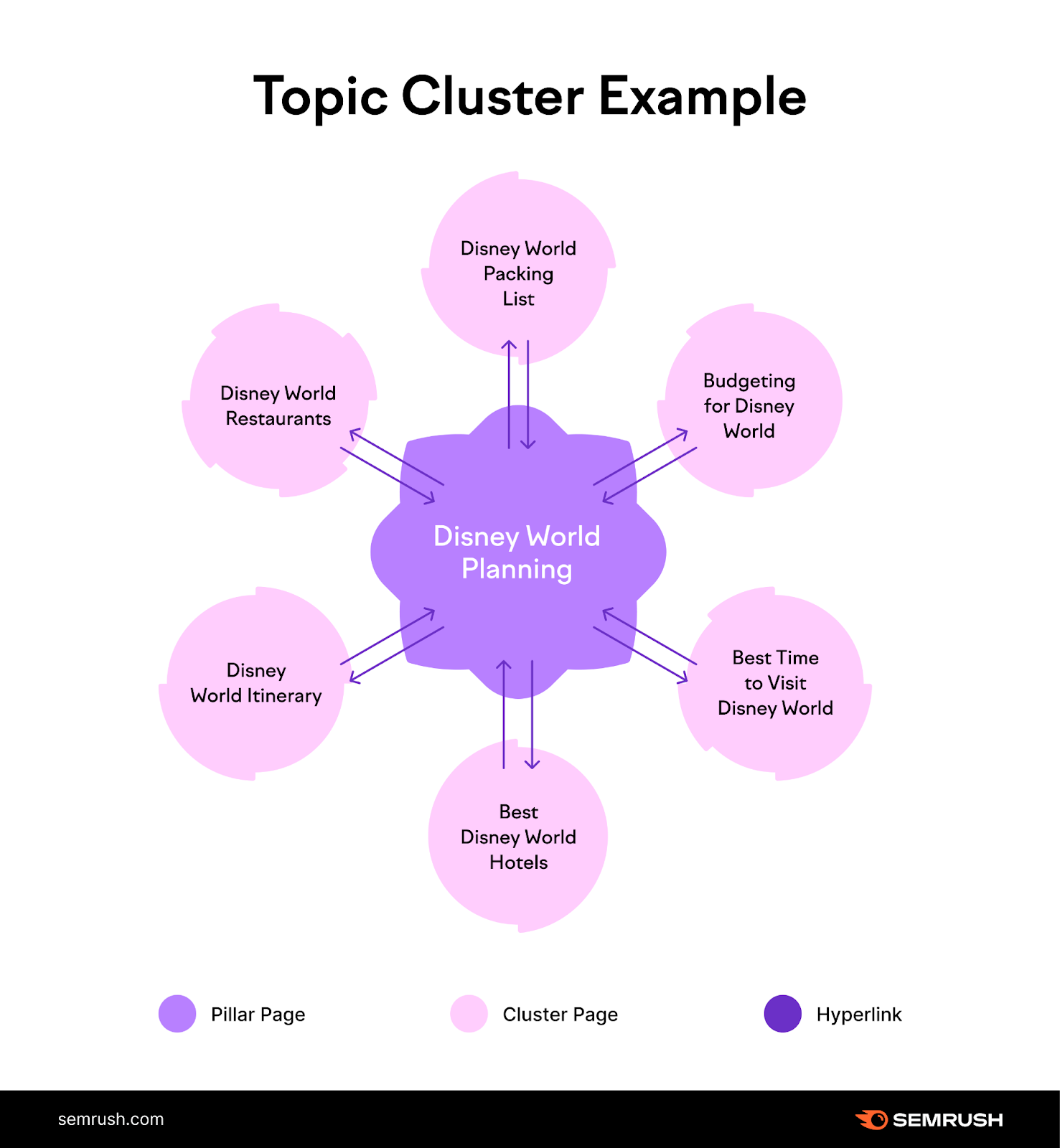
They also create a strong internal linking structure. Which is important for SEO.
Let’s look at an example for a running shoe company. One main pillar topic could be “marathon training.”
Plug this into Google Trends. Then, look at the data in the “Related topics” and the “Related queries” sections to uncover subtopics related to this broad topic.
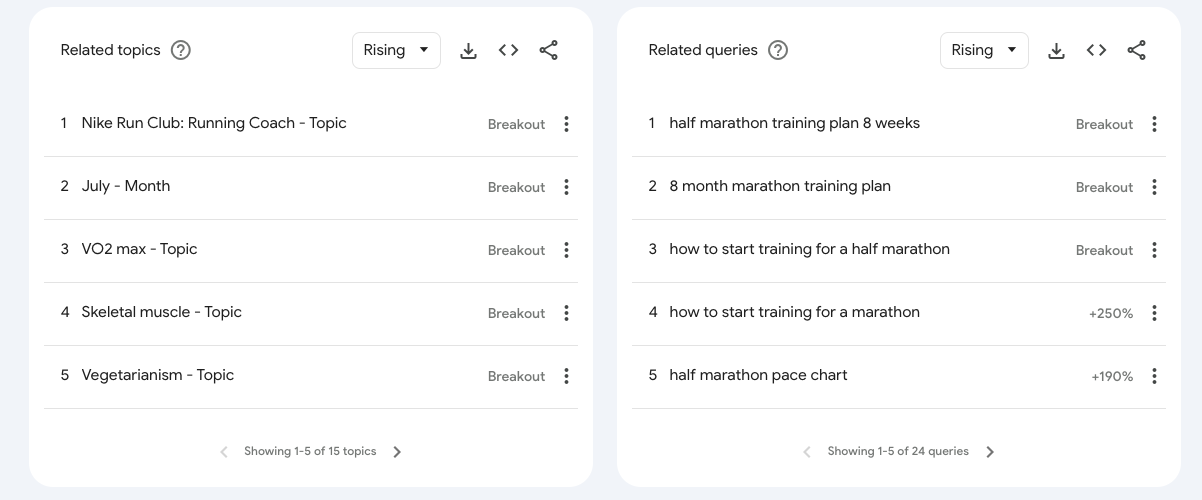
A few subtopics stand out:
- “How to start training for a marathon”
- “8 month marathon training plan”
These are some good blog post ideas.
If you want to find more topic ideas, use Semrush’s Keyword Magic Tool.
Just enter your main keyword in the tool and click “Search.”

You’ll find lots of topic ideas. Along with their search volumes and ranking difficulties.
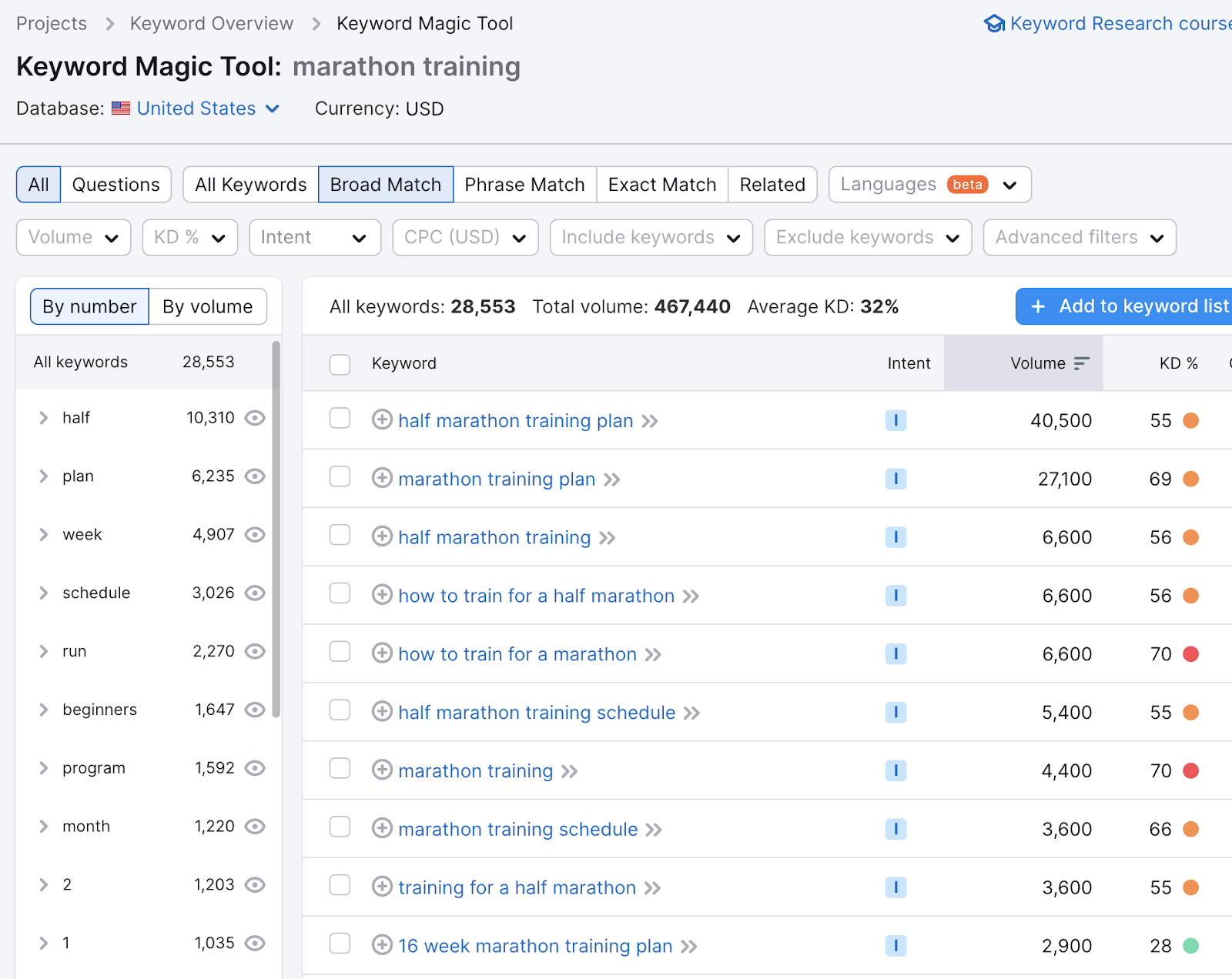
3. Improve Your YouTube SEO
Google Trends can also help you optimize for YouTube SEO.
YouTube SEO is a set of tactics used to try to rank your video content in YouTube’s search results. And help it appear more prominently across YouTube as a whole.
The first step of optimizing for YouTube is finding topics people are interested in. So you can create content around them.
How do you find these topics?
Google Trends can help.
For example, if you’re a fitness creator, enter a topic idea you think has potential. For example, “yoga.”
Then apply the following filters:
- Click the default “Web Search” category and change it to “YouTube Search”
- Select the “All categories” drop-down and set it to match your channel theme (in this case, “Beauty & Fitness”)

Now, you’ll see the overall trend of “yoga” on YouTube.
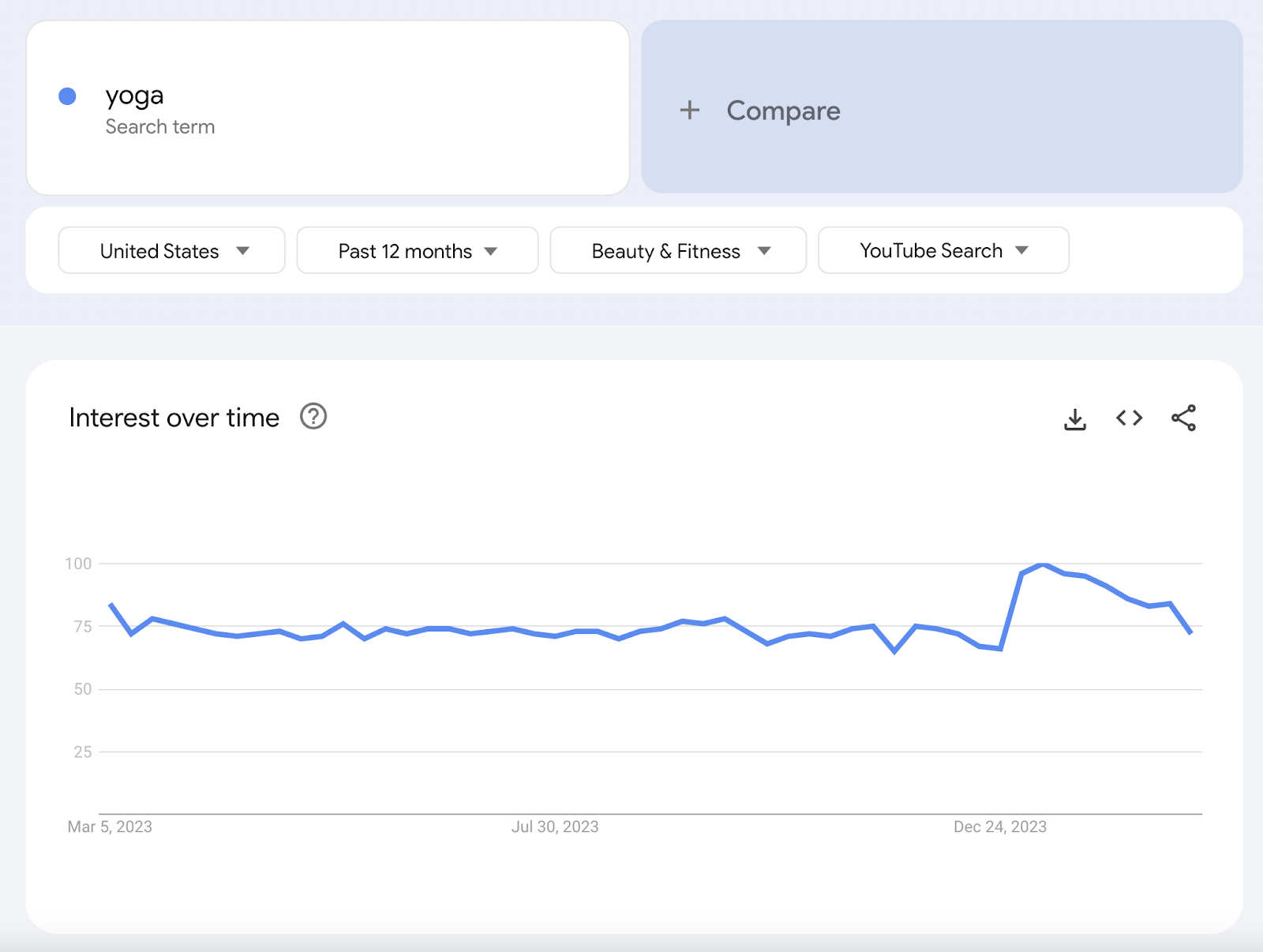
It looks like it’s still popular and that the trend is stable. So, you can definitely create video content around this topic.
But what are some other topics you can also create videos around?
To find out, scroll down to see the “Related topics” and the “Related queries” sections.
Then, click the arrow buttons at the bottom of the lists to go through all the related results.
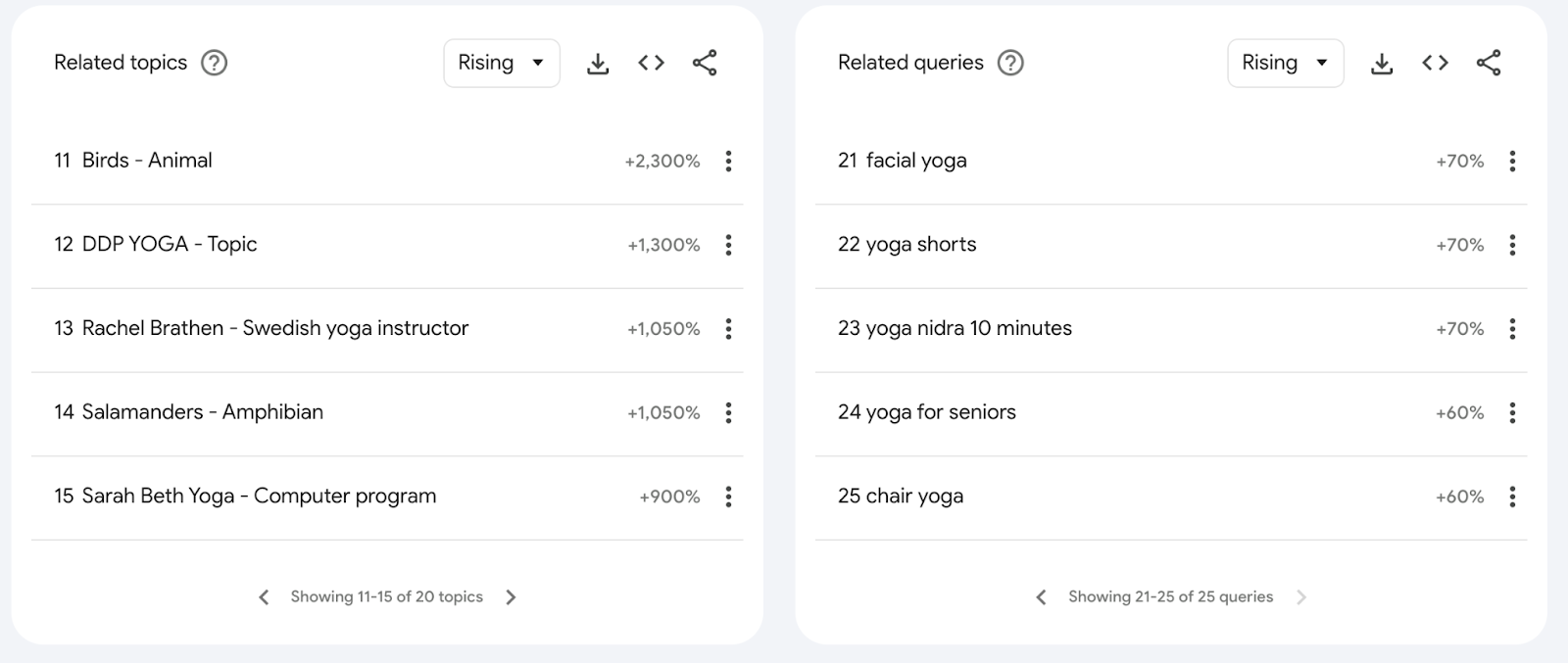
This reveals some topics that might work well are:
- “facial yoga”
- “yoga for seniors”
- “yoga nidra 10 minutes”
4. Optimize Your Local SEO Strategy
Local SEO is the process of optimizing your online presence to improve your visibility among people in your area.
This is important for businesses that have a physical location or serve a specific geographic area, as it helps them reach more local customers.
Let’s say, you sell surfboards. And you want to know which U.S. states are going to be important for you from a local SEO standpoint.
Enter “surfboards” in Google Trends. And look at the “Interest by subregion” section to find out.
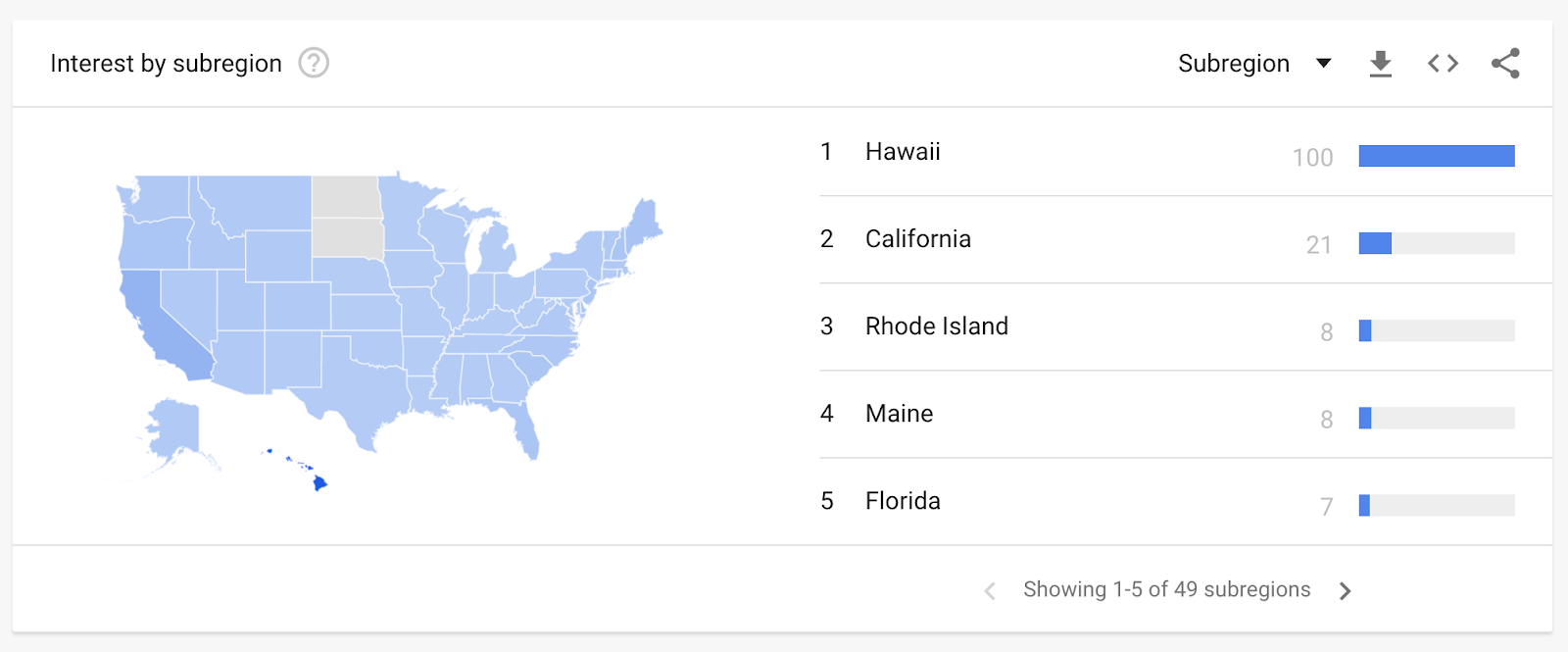
Then, you can create location-specific landing pages for your website that target the areas where surfboards are popular.
For example, you can have a page for “Surfboards in California,” another one for “Surfboards in Hawaii,” another one for “Surfboards Rhode Island,” and so on.
Include relevant keywords, images, and information on these pages. And be sure to mention the types of surfboards you offer, your prices, your shipping options, and any customer testimonials you have.
All this will increase your chances of ranking higher in search results when someone searches for surfboards in these areas.
5. Leverage Seasonal Trends
A smart marketing strategy takes advantage of seasonal trends (like those around holidays or times of year) to boost sales and traffic.
For example, if you own a flower shop, you probably know that there’s going to be a spike in searches for flowers just before Valentine’s Day and Mother’s Day.
You can validate this using Google Trends:
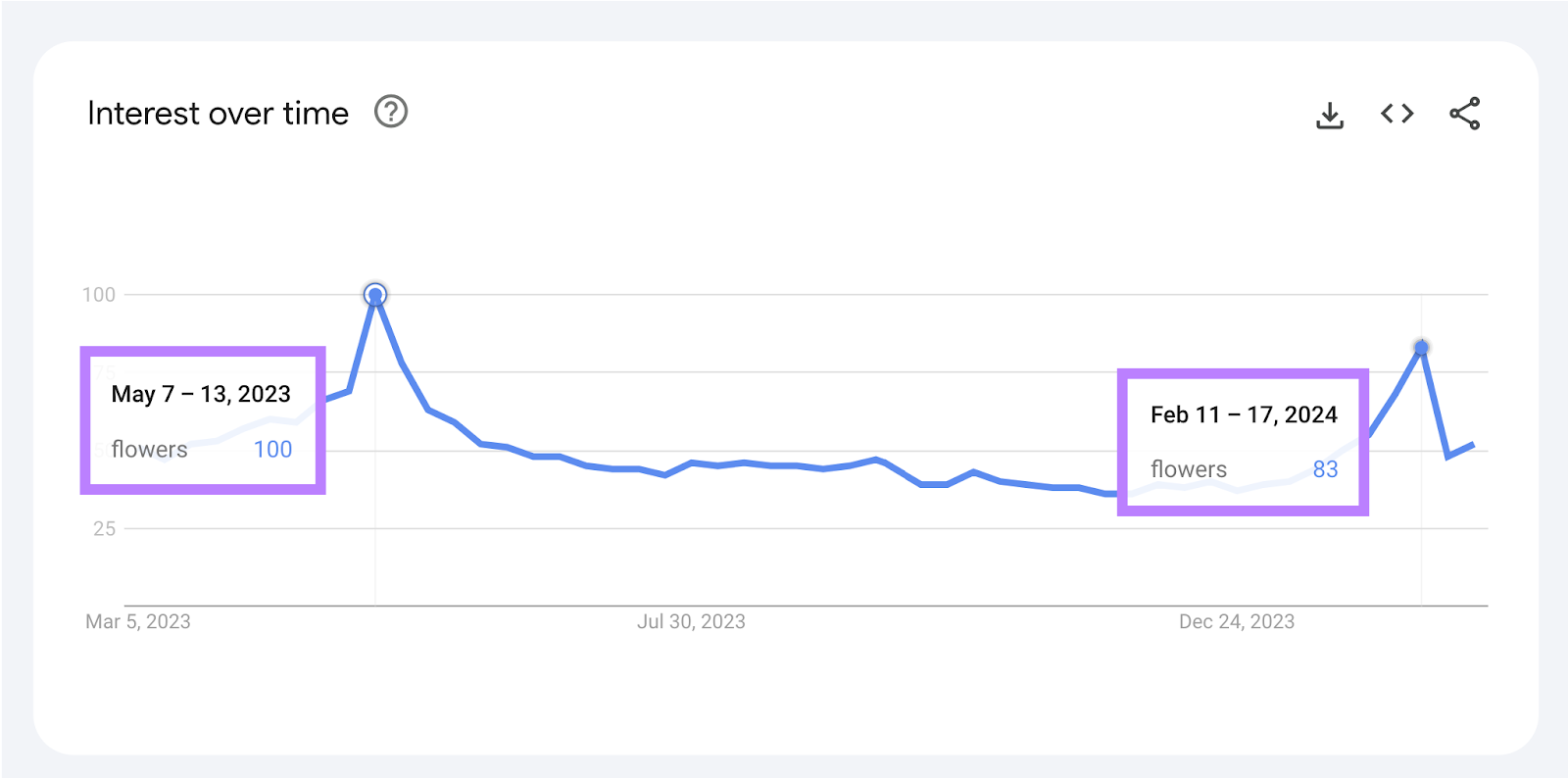
Once you spot a trend like this, adjust your marketing activities accordingly.
For example, you can give your paid search campaigns a boost by temporarily increasing your advertising budget, offering discounts or promotions, and creating special bundles or packages just before the trend starts.
You can also create seasonal content that’s evergreen like a blog post about how to choose the best flowers for a gift. Which can continue bringing in traffic for years with very little upkeep.
But make sure you distinguish between trends and fads.
Trends are topics that spike around the same time each year. While fads are topics that spike once and then fade away.
For example, “ice bucket challenge” was a fad that was only popular in August 2014.
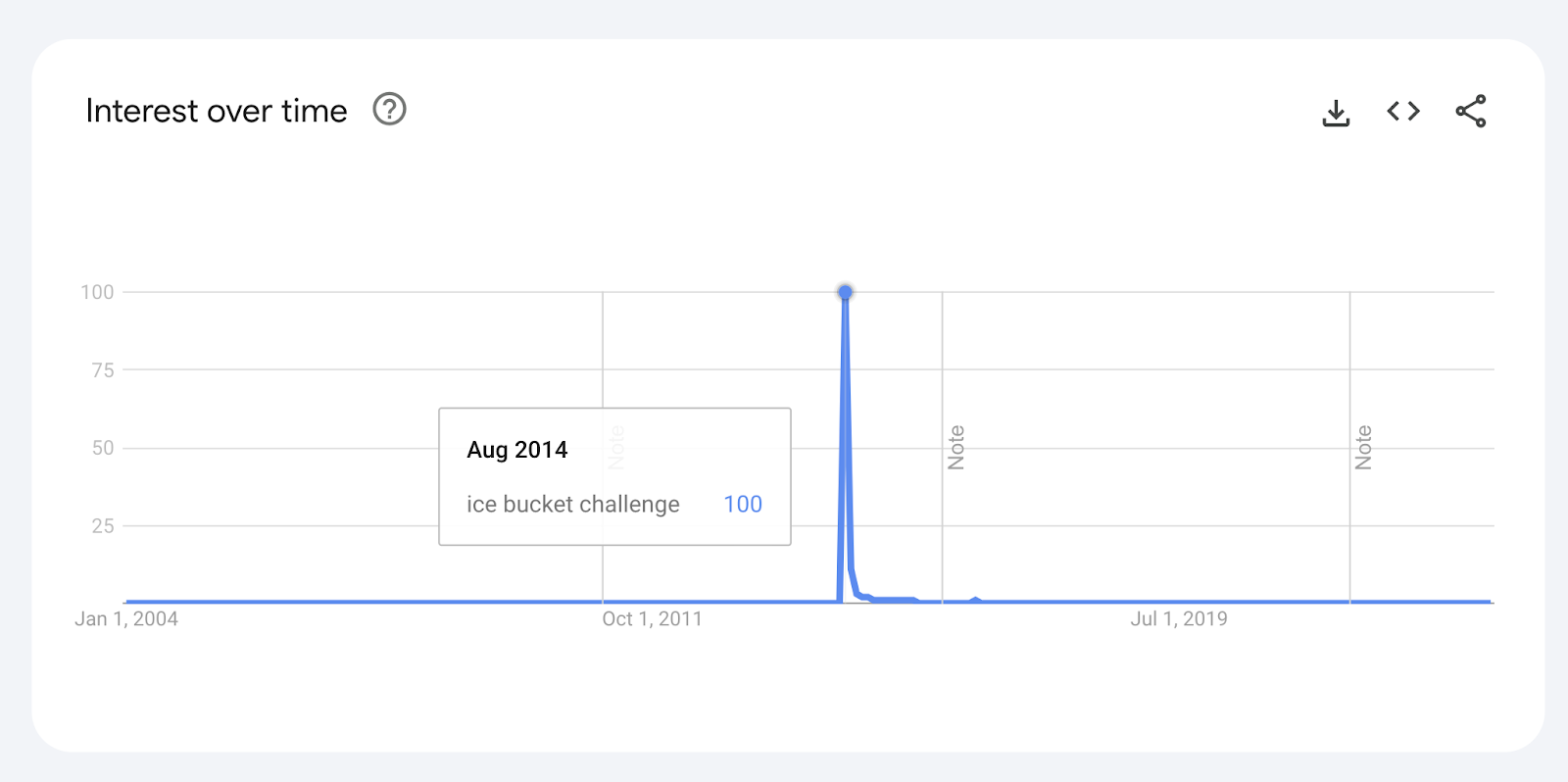
6. Leverage Trending Topics for Social Media Content
Trending topics are excellent for creating social media content around. Because when you join ongoing conversations, more people are likely to engage with you.
To see what’s currently trending where you are, just navigate to the Google Trends homepage.
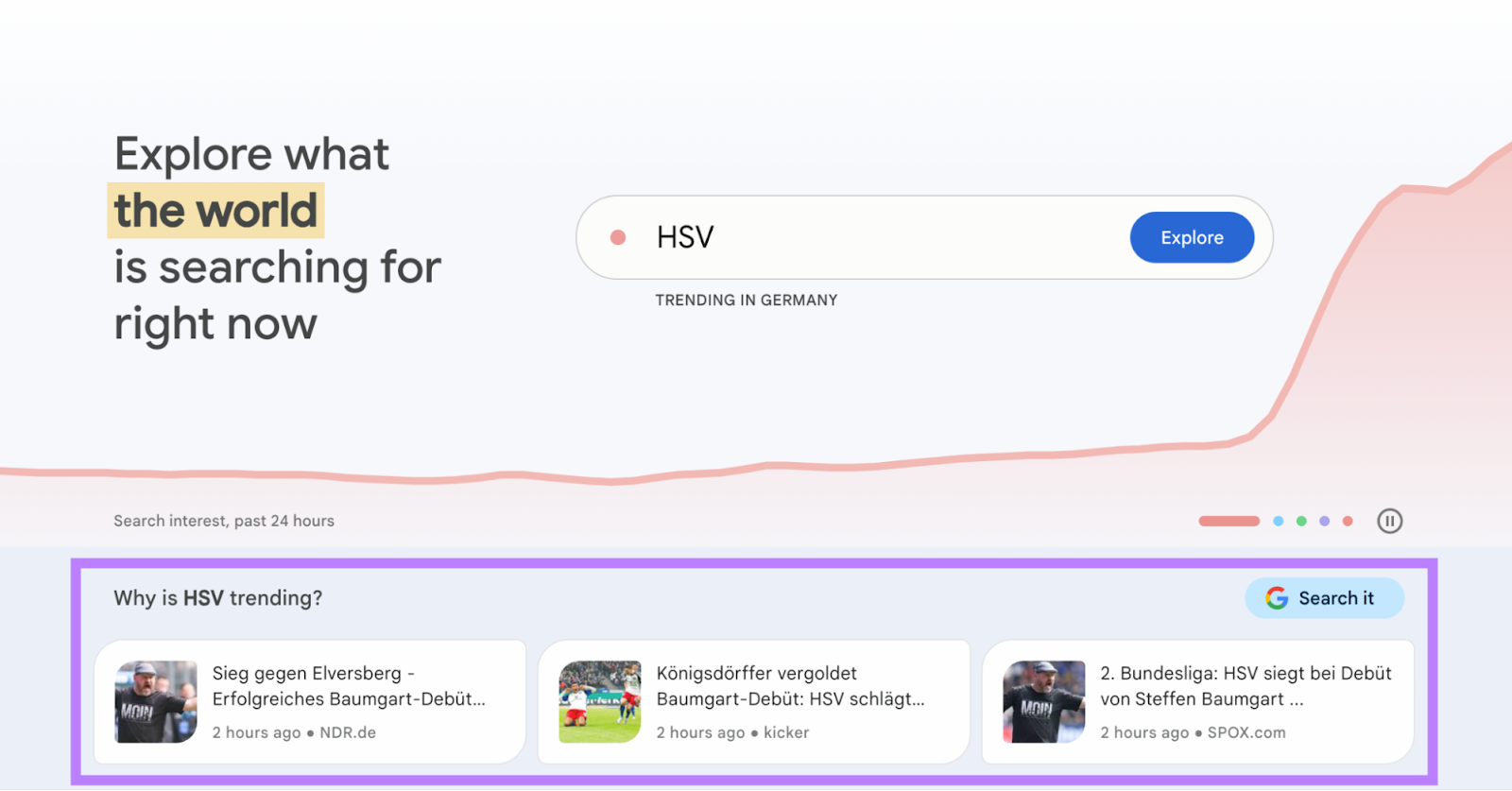
We try to leverage trending topics like this ourselves.
For example, there was a lot of buzz around the Barbie movie once it was announced.
So, we created this Facebook post for a humorous comparison between how landing pages are usually designed compared to the rest of the website.

And it was a quick way to connect with our audience and drive engagement.
7. Monitor How You Stack Up Against Your Competitors
Competitive benchmarking helps you understand where you currently stand in relation to your rivals. So you can find ways to improve.
The “Compare” option in Google Trends lets you see how your brand stands up to the competition.
We’ll use Vuori and YoungLA for this example. In this case, it’s probably more useful to set the time frame back a few years to get a better overview of their respective performances.
We can see that competition has remained somewhat steady over the last five years, with Vuori comfortably in the lead:
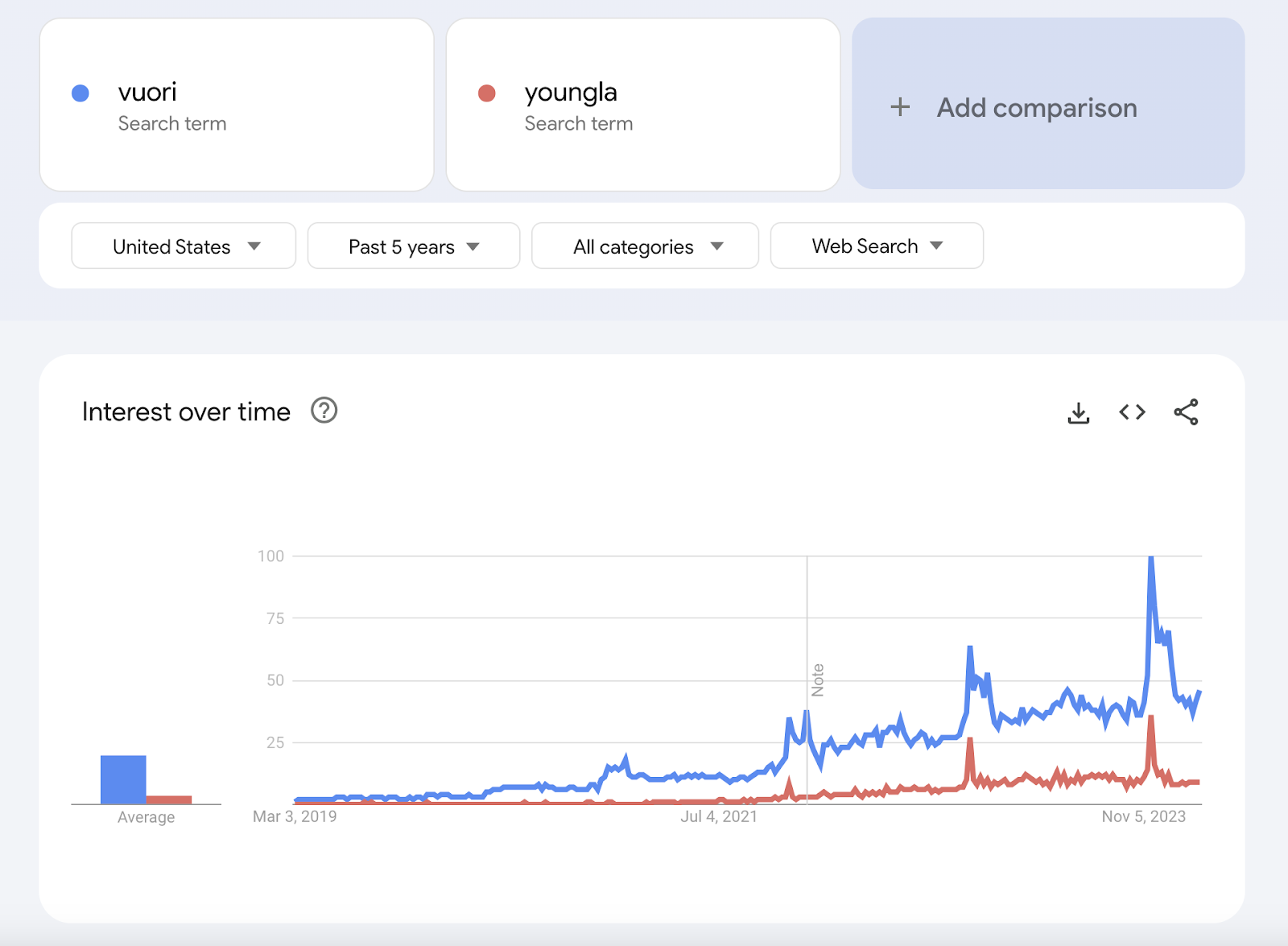
We can also see that a lot of the traffic spikes occur at the same time for both brands (likely due to seasonal shopping trends).
Now, let’s look at Vuori versus Fabletics, which shows a bit more volatility:
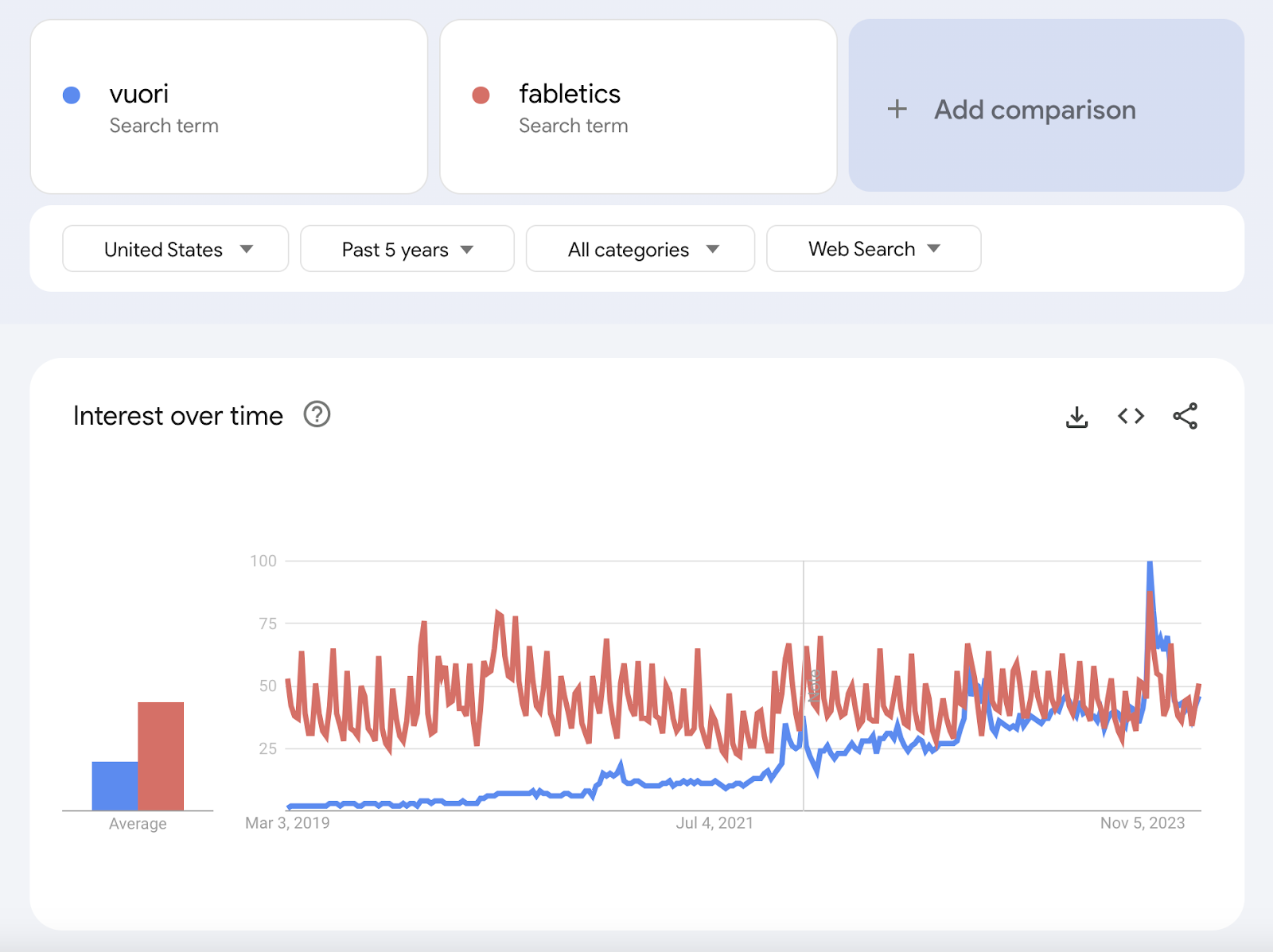
While Vuori is a newer brand, it rapidly caught up to Fabletics in 2022. And has also maintained a more consistent interest over time.
If you work at a similar company, you might want to check what your competitors were doing during their traffic spikes. To see whether there are opportunities to adjust your marketing strategy to replicate that success.
An even better way to keep tabs on your competitors’ trends is to use a market research tool like Market Explorer.
Just enter a couple of competitors’ domains. And click “Create and analyze.”.

Then, scroll down to the “Top Keywords” widget to see what keywords drove the most traffic over the selected time period.
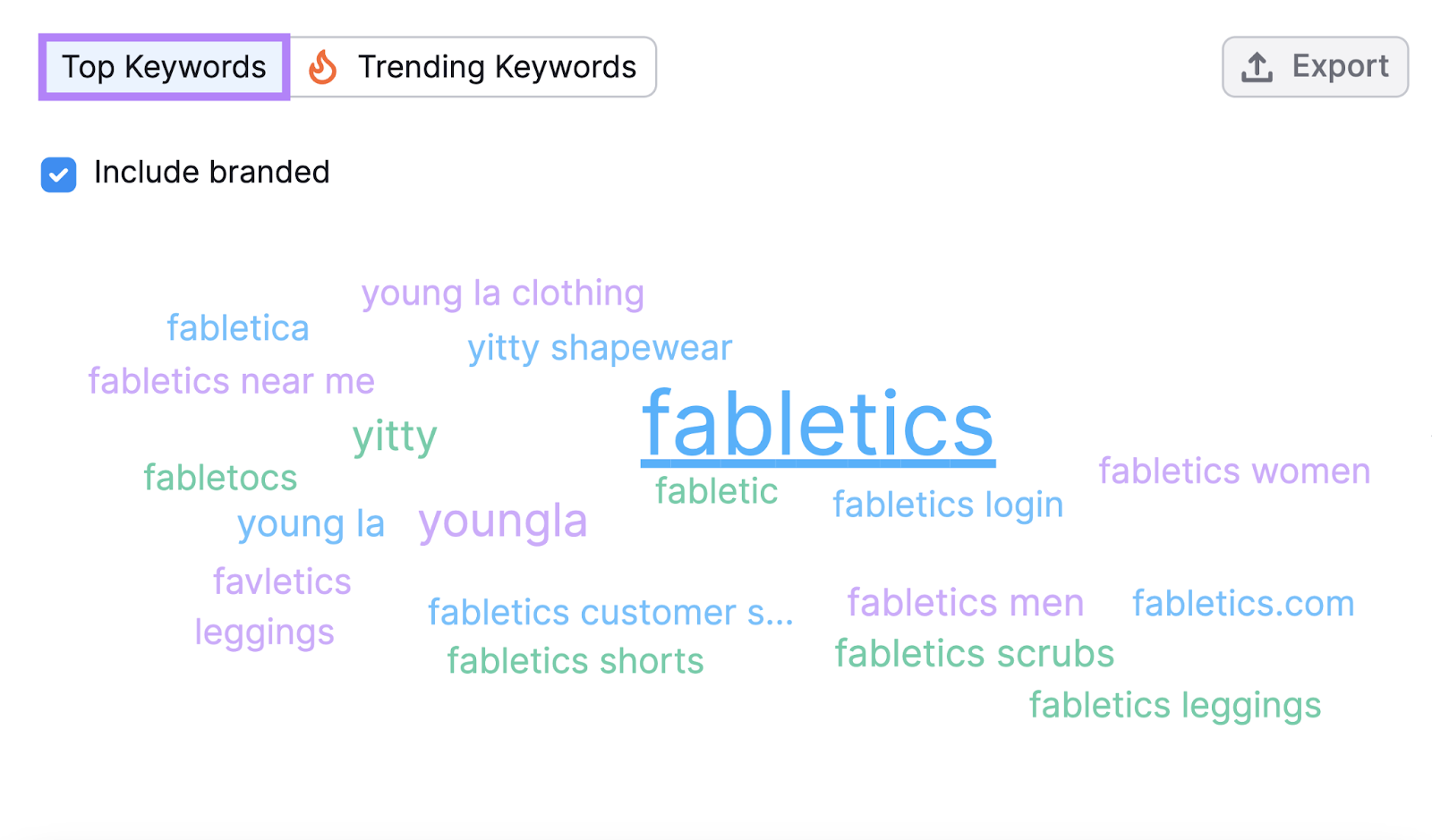
Then, select “Trending Keywords” to discover which terms saw the most significant volume increases over the selected time range.
And hover over different keywords to see the specifics.
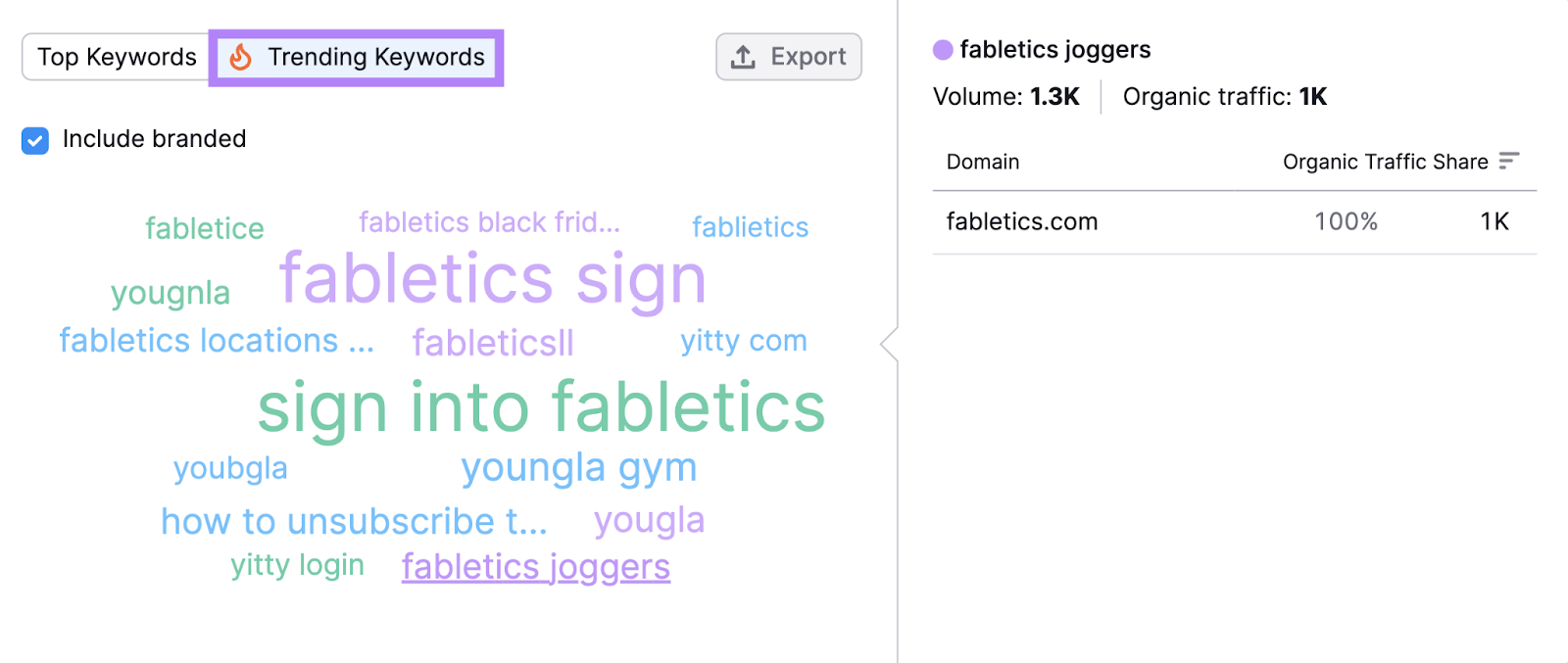
Analyzing what’s trending across your market can help you better understand what’s working for competitors. Which could also work for you.
If you’re in the athleisure wear business, you may miss out on traffic or customers if you aren’t acting on trends like these.
Get More Out of Google Trends Data
Google Trends can give you powerful insights for your business—whether you’re researching keywords, eyeing your competitors, or even coming up with a local SEO strategy.
But go one step further and use Semrush tools to gain an even deeper understanding of your market landscape.
Try it today.
Source link : Semrush.com
